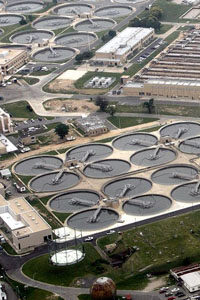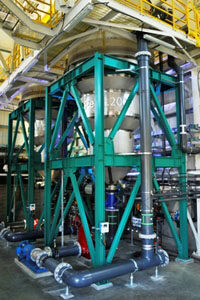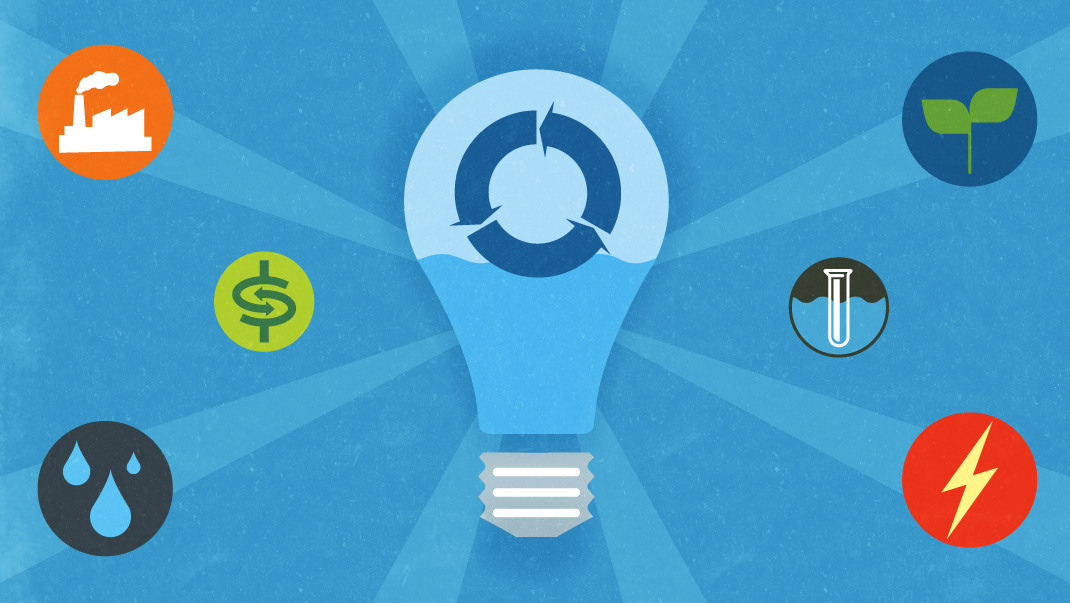It is not much of a stretch to imagine today’s water professionals decades ago, sitting in a row of plastic chairs and disrupting class by questioning the conventional wisdom. It is exactly that kind of disruption that is moving the water industry into the future. A term ordinarily reserved for the technology industry, disruptive is how many describe ventures such as Uber, which disrupted the taxi industry and ultimately changed the way we think about ride-sharing. In the case of the water industry, the disruption will be of our current paradigm not just from waste removal and disposal to a vision of next-generation resource recovery but to a model that uses what we have for maximum efficiency.
At this week’s WEFTEC15 in Chicago, more than 20,000 water professionals from around the world are gathering to answer this question and share insights on One Water and the Utility of the Future, which will most certainly include resource recovery.
Conventional wisdom tells us what must be removed from water – waste – while the new way of thinking has us asking the question: What can we do with this so-called waste?
The goal: To lessen water pollution, be more efficient in wastewater treatment, create beneficial byproducts and save money and energy in the process.
The transformation of water – from waste to resource – is happening right now, as utilities implement mature technologies for the recovery of nutrients, water and energy. Looking ahead, utilities are searching for ways to extract new resources such as bioplastics, alcohols, hydrogen, nutrients, lipids and more.
With heightened awareness about the environment and the need to get the most out of our natural resources, utilities are embracing this new role as resource recovery and reclamation facilities. Not wanting to be defined in such a limited way, utilities are renaming themselves to reflect their new role.
New name reflects commitment
Renewable Water Resources (ReWa) in Greenville, S.C., formerly Western Carolina Regional Sewer Authority, says its name reflects a commitment to protect, clean and renew the valuable environmental resources of the community. And this commitment goes way back, says Engineering Department Manager Greg Wright.
Since 1989, farmers in upstate South Carolina have been reaping the benefits from the ReWa Biosolids Recycling Program. Pulling from five of its facilities, ReWa recycles 85 percent of the organics recovered as useful organic fertilizer for agriculture, forestry and soil improvement.
“It is a sound way to put a valuable resource to work for our environment,” Wright said.
As wastewater utilities recycle water, organic materials and food waste to create valuable water, soil amendment and energy products, it’s inevitable that energy is going to take center stage.
DC Water celebrates a milestone
 DC Water, the first utility in North America to employ an innovative thermal hydrolysis process and anaerobic digesters to generate electricity from wastewater treatment, is celebrating a milestone at its Blue Plains Advanced Wastewater Treatment Plant on Oct. 7. It has been in operation since October 2014.
DC Water, the first utility in North America to employ an innovative thermal hydrolysis process and anaerobic digesters to generate electricity from wastewater treatment, is celebrating a milestone at its Blue Plains Advanced Wastewater Treatment Plant on Oct. 7. It has been in operation since October 2014.
“It could be a game changer for energy,” George Hawkins, general manager of DC Water, told the Washington Post. “If we could turn every enriched-water facility in the United States into a power plant, it would become one of the largest sectors of clean energy that, at the moment, is relatively untapped.”
There are a number of similar facilities in design, including those at the Trinity River Authority in Texas, the San Francisco Public Utilities Commission and the Hampton Roads Sanitation District in Virginia Beach, Va.
HRSD upgrade is all about value
Charles Bott, Director of Water Technology and Research, says HRSD’s $40 million upgrade that’s currently in design for the Atlantic Treatment Plant is all about valuing what they already have. Using the thermal hydrolysis process to maximize the quality of their existing biosolids project, HRSD will transition from Class B to Class A biosolids — which have a wider range of uses — by augmenting the district’s existing digesters.
“We are just trying to do what makes sense. The existing digesters are a resource,” Bott said. “It’s really about intensification of those technologies, and getting a whole lot more capacity with what we already have and not doing that at the expense of increased O&M costs. Rather, we are doing it with less O&M cost and recovering energy and a high-quality biosolids project at the same time.”
From wastewater to fertilizer in Oregon
 In Hillsboro, Ore., Clean Water Services opened the world’s largest municipal nutrient recovery facility at the Rock Creek Advanced Wastewater Treatment Facility in 2012. It’s a project that has many environmental benefits, as well as financial ones.
In Hillsboro, Ore., Clean Water Services opened the world’s largest municipal nutrient recovery facility at the Rock Creek Advanced Wastewater Treatment Facility in 2012. It’s a project that has many environmental benefits, as well as financial ones.
The pioneering technology provides $650,000 a year in operational savings and revenue from the sale of fertilizer. The Rock Creek Facility was also granted an Oregon Department of Energy Business Energy Tax Credit of $1.12 million which helped fund construction. The project is projected to make a return on the $4.5 million investment within six years.
But cost is far from the only driver for the Rock Creek project. The unique public-private partnership with Ostara Nutrient Recovery Technologies of Vancouver, Canada, captures phosphorus in wastewater to produce 1,200 tons a year of Crystal Green, a high-value fertilizer for sale to the nursery and turf industry in Oregon’s Willamette Valley and beyond. CWS and Ostara opened North America’s first commercial nutrient recovery facility at the Durham Treatment Facility in Tigard in 2009.
“The investments we make as a community together in our public infrastructure matter. Combining the power of Mother Nature with technology to create elegant water solutions is Clean Water Services’ Utility of the Future mindset,” said Diane Taniguchi-Dennis, CWS Deputy General Manager. “With this broader vision and mindset, not only is water quality improved, resources recovered, and an efficiently operated utility achieved but people are also intentionally being connected to their ecosystem.”
An example of this is Fernhill, a 700-acre property where CWS has combined a state-of-the-art wastewater treatment facility with wetlands that naturally cool and provide additional treatment to the water before it is discharged into the Tualatin River. Also the wetlands provide habitat for wildlife and migratory birds on the Pacific Flyway. The network of public walking trails is an oasis for people seeking to escape the noise and stress of urban life and to view the beauty and grace of the migratory birds that visit Fernhill, Taniguchi-Dennis said.
This role in overall watershed protection was what motivated their name change from Unified Sewage Agency in 2001.
“Everything we do at Clean Water Services aims to protect public health, while enhancing the natural environment of the Tualatin River Watershed,” she said. “Combining science and nature, we work in partnership with others to safeguard the river’s health and vitality, ensure the economic success of our region, and protect public health for more than 560,000 residents and businesses in Washington County.”
